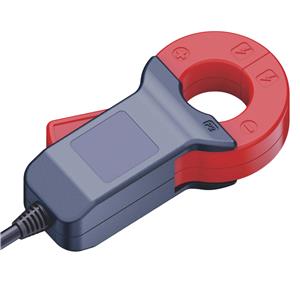-
1909-2024
Isolation Transformers in Healthcare: A New Era of Secure Data Analytics
The medical field, known for its strict regulations concerning patient confidentiality, has long sought innovative solutions to leverage big data without compromising privacy. This article focuses on the role of isolation transformers in addressing these challenges, showcasing how they enable secure and efficient analysis of sensitive health data.
-
1809-2024
Advancements in Isolation Transformers: Enhancing Data Privacy in Distributed Systems
In the rapidly evolving landscape of data science and machine learning, isolation transformers have emerged as a pivotal technology, particularly in scenarios requiring robust data privacy. This paper delves into the innovative design principles of isolation transformers and their significant contributions to distributed systems. We will explore how these models, originally proposed by researchers in the field of deep learning, facilitate secure data processing without the need for direct data sharing or exposure.
-
1205-2024
Exploring the Role of Ferrite Materials in High Frequency Transformers
High frequency transformers are crucial components in various electronic devices, ranging from power supplies and converters to telecommunications systems. These transformers operate at frequencies above 20 kHz, necessitating the selection of suitable materials that can efficiently handle high frequency signals. Ferrite materials have emerged as a popular choice due to their unique properties and advantages in high frequency transformer applications. This article delves into the role of ferrite materials in high frequency transformers, highlighting their benefits and characteristics.
-
0705-2024
Advanced Core Materials for High Frequency Transformers
High frequency transformers play a crucial role in various electronic devices and power systems. The efficiency and performance of these transformers heavily depend on the core materials used in their construction. In recent years, there has been significant research and development in the field of advanced core materials for high frequency transformers. This article will explore some of the latest advancements in core materials and their impact on transformer design and operation.
-
0104-2024
Design Considerations for Power Frequency Transformers
Power frequency transformers are integral components in electrical systems, playing a pivotal role in converting and transmitting electrical energy efficiently. The design of these transformers involves meticulous planning and attention to detail to ensure optimal performance and reliability. This article explores some crucial design considerations for power frequency transformers.
-
0204-2024
Maintenance and Troubleshooting of Power Frequency Transformers
Power frequency transformers are essential components in electrical systems, serving as a vital link between different voltage levels. Their proper maintenance and troubleshooting are crucial for ensuring the reliable and efficient operation of the entire electrical network.
-
0901-2024
Power frequency transformers
Power frequency transformers (PFTs) are critical components in electrical power systems, providing voltage regulation, step-up or step-down functionality, and isolation between different voltage levels.
-
1310-2024
Recent Developments in Current Transformers: Enhancing Efficiency and Performance
In the realm of power electronics and instrumentation, current transformers (CTs) have been at the forefront of innovation. Modern CTs are witnessing significant advancements, driven by the increasing demand for higher accuracy, faster response times, and more sustainable solutions.
-
2911-2023
Advancements in Miniature Voltage Transformers
Miniature voltage transformers, also known as mini VTs or compact VTs, have gained significant attention in recent years due to their compact size and versatile applications. These transformers play a crucial role in measuring and monitoring voltage levels in various electrical systems. This article explores the advancements in miniature voltage transformers and their impact on different industries.




